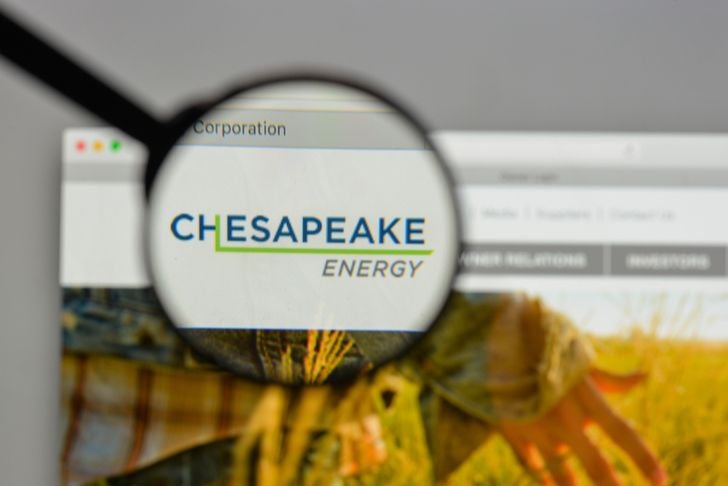Over the past year or so, I’ve recommended Chesapeake Energy (NYSE:CHK) as a high-risk, high-reward play. I even briefly owned Chesapeake Energy stock last year. Whether those calls were correct comes down mostly to timing: CHK stock continues to trade sideways, dipping below $3 earlier this year and climbing above $5 in July before yet another pullback to about $4.
Back at these levels, CHK still seems to have a lot of potential upside and something close to 100% potential downside. In short, not all that much has changed. In fact, that’s both the good news and the bad news when it comes to Chesapeake Energy stock.
The Bull Case for Chesapeake Energy
The bull case for CHK stock has been relatively unchanged since the stock finally bottomed back in early 2016. Chesapeake Energy shares briefly dipped below $2 at that time, driven by rumors of a potential bankruptcy.
A report that the Chesapeake Energy had hired a restructuring firm led the stock down 28%, as investors feared the company’s nearly $10 billion in debt would simply overwhelm it.
Those fears would pass, however. Investors instead showed faith in the company’s strategy under CEO Doug Lawler, who came on board in 2013. The old, uber-aggressive plans to grow at any cost were over. Chesapeake would prudently sell assets to improve its balance sheet, while focusing capex on its best properties in a bid to drive positive cash flow.
Lower debt would lower interest expense and free up more cash flow. Higher gas and oil prices could help margins. If it all worked out, CHK had a path toward huge upside.
That’s still roughly the same case today, more than two years later. Chesapeake had $9.7 billion in debt at the end of 2015. The figure at the end of Q2 was…$9.7 billion. Chesapeake continues to target consistent positive free cash flow and continues to fall short.
In that context, it’s not surprising to see CHK stock back under $4, where it traded for good chunks of both 2016 and 2017. There has been some progress under Lawler, admittedly but much less than CHK bulls were looking for.
The Case for Moving On
And so investors would be forgiven for simply moving on. Robert Martin (no relation) argued on this site last month that Chesapeake Energy stock simply wasn’t worth the hassle. A sell-off after Q2 results where EBITDA came in below expectations and costs above. The recent move to a four-month low suggests many investors agree.
Operationally, Chesapeake simply isn’t good enough yet. Q2 Adjusted EBITDA was $536 million. Capital expenditures were $595 million. Even disregarding $100 million-plus in interest expense every quarter, Chesapeake isn’t at a point where it can generate positive free cash flow.
Without that, it becomes much more difficult to repay its debt, let alone support what remains a ~$3.6 billion market cap.
External help hasn’t come, either. Natural gas prices have remained below $3 for the entirety of the year. And even with the pullback in CHK stock, there’s a case that an investor betting on higher prices should look elsewhere.
Gas-heavy producers EQT Corporation (NYSE:EQT) and Antero Resources (NYSE:
AR) both have threatened 52-week lows of late. Cabot Oil & Gas (NYSE:COG) has hit the lows. Those companies have better balance sheets and positive free cash flow. They seem like easier plays, at the least.
The Case for CHK Stock
All that said, there is a case for CHK stock back at $4. The company has made some progress on debt reduction through a $2 billion sale of assets in the Utica Shale that closed after the end of Q2. Strong performance in the Powder River Basin is expected to fill the production gap left by the sale.
And while natural gas prices aren’t helping, oil prices are rising. Crude remains a small part of production, and Chesapeake’s hedges have left its realized prices below market levels. Still, ‘higher for longer’ oil prices do help the cause here as the company tries to grind back to positive free cash flow. There’s still a path toward that goal, particularly if the Powder River Basin lives up to expectations.
Admittedly, this is all basically the same as the case for Chesapeake Energy stock that existed two years ago. That’s frustrating, no doubt. But Chesapeake has made some progress.
Near-term debt maturities are easily manageable; Chesapeake Energy still has time. More asset sales could be on the way, and Chesapeake Energy still owns about $220 million worth of FTS International (NYSE:FTSI), though that stock has struggled since its February IPO.
And if the plan works, it still can work big. A 10% increase in the market’s valuation of the entire company, including debt, suggests that Chesapeake Energy stock would rise by over 30%.
Whether that increase comes from more confidence about its balance sheet, better drilling, higher energy prices, or (as is most likely) some combination of the three, CHK can post huge gains.
Of course, the converse is true as well. Chesapeake Energy remains on shaky ground, and another bear market in energy could start up those bankruptcy rumors all over again. CHK stock is a leveraged bet in every sense of the phrase. But with a newly cheaper price, it remains intriguing for both investors looking for risks and traders looking for a bottom.
As of this writing, Vince Martin has no positions in any securities mentioned.

